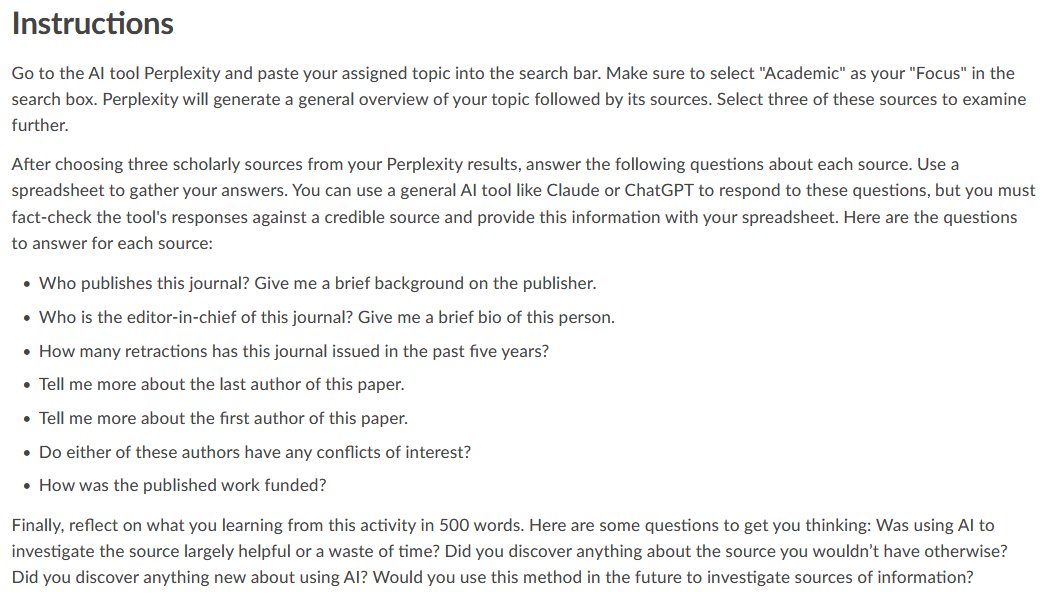Using AI Tools to Find and Research Scholarly Sources
Overview
Students use various AI tools to research scholarly sources in depth to learn more about the practice of scholarly writing and publication and how to examine sources for credibility.
Why Use This?
This activity allows students to practice using an AI tool that focuses on scholarly research and develop their critical thinking and analysis skills in examining their sources. Additionally, it allows them to learn more about scholarly research and publication.
How Does It Work?
Students are assigned a topic and asked to use the AI tool Perplexity to identify three scholarly journal articles on this topic. After they have identified three sources, they are asked to examine each source further by answering a series of questions about each one. They are invited to use at least two AI tools to help with their research and tasked with fact-checking the output themselves. Finally, they are asked to reflect on their experience using these tools and what they uncovered examining these sources in more detail.
Here are example instructions for this activity:

Instructions
Go to the AI tool Perplexity and paste your assigned topic into the search bar. Make sure to select “Academic” as your “Focus” in the search box. Perplexity will generate a general overview of your topic followed by its sources. Select three of these sources to examine further.
After choosing three scholarly sources from your Perplexity results, answer the following questions about each source. Use a spreadsheet to gather your answers. You can use a general AI tool like Claude or ChatGPT to respond to these questions, but you must fact-check the tool’s responses against a credible source and provide this information with your spreadsheet. Here are the questions to answer for each source:
Who publishes this journal? Give me a brief background on the publisher.
Who is the editor-in-chief of this journal? Give me a brief bio of this person.
How many retractions has this journal issued in the past five years?
Tell me more about the last author of this paper.
Tell me more about the first author of this paper.
Do either of these authors have any conflicts of interest?
How was the published work funded?
Finally, reflect on what you learned from this activity in 500 words. Here are some questions to get you thinking: Was using AI to investigate the source largely helpful or a waste of time? Did you discover anything about the source you wouldn’t have otherwise? Did you discover anything new about using AI? Would you use this method in the future to investigate sources of information?
Keep In Mind
- Ask students to record the information they fact-checked in a spreadsheet. This might even be a shared class resource where everyone is invited to add their source and what they found.
- Use an activity like this to expose students to various AI tools and to familiarize them with scholarly writing and publication in their academic or professional field of study.
- Consider asking students to write a long reflection on this activity, specifically asking them where they might apply what they’ve learned in their other courses, professional careers, or personal lives.